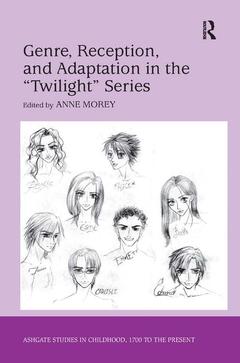Genre, Reception, and Adaptation in the 'Twilight' Series Studies in Childhood, 1700 to the Present Series
Coordonnateur : Morey Anne

Anne Morey is associate professor of English at Texas A&M University. She is presently at work on a history of religious filmmaking in the United States.
Date de parution : 03-2012
15.6x23.4 cm
Date de parution : 11-2016
15.6x23.4 cm
Thème de Genre, Reception, and Adaptation in the 'Twilight' Series :
Mots-clés :
breaking; dawn; mary; sue; bellas; desire; meyers; stephenie; meyer; film; Young Man; DVD Extra; Golden Eyes; Vanden Bossche; Breaking Dawn; Narrator Reader Relationship; Bella’s Desire; Breaking Dawn Part; Fairy Tale; Twilight Saga; Meyer’s Series; Mary Sue; Newborn Vampires; Female Audience Member; Vampire Genre; Narrative Intimacy; Male Audience Members; Horror Movies; Teen Film; Bella’s Narration; Harlequin Romance; Cinematic Installments; Derald Wing Sue; Mystery Science Theater; Cornel Sandvoss



